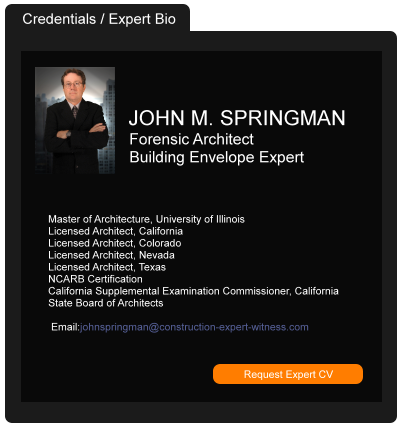Continuing Breach Doctrine
May 28, 2024 —
David Adelstein - Florida Construction Legal UpdatesHave you ever heard of the “continuing breach” doctrine? Probably not. It is not a doctrine commonly discussed. It’s a doctrine used to try to argue around the statute of limitations.
In an older Southern District Court of Florida case, Allapattah Services, Inc. v. Exxon Corp., 188 F.R.Ed. 667, 679 (S.D.Fla. 1999), the court explained: “Under this [continuing breach] doctrine, a cause of action for breach of a contract does not begin to accrue upon the initial breach; rather, on contracts providing serial performance by the parties, accrual of a breach of contract cause of action commences upon the occurrence of the last breach or upon termination of the contract.”
Recently, this doctrine came up in an opinion by Florida’s Fifth District Court of Appeal. In Hernando County, Florida v. Hernando County Fair Association, Inc., 49 Fla.L.Weekly D947b (Fla. 5th DCA 2024), a plaintiff appealed the trial court’s dismissal with prejudice of its breach of contract claim based on the statute of limitations. The plaintiff claimed the defendant breached the contract by its failure to substantially redevelop property. The trial court dismissed based on the statute of limitations. However, the complaint alleged the defendant’s failure to comply “with numerous other intertwined, ongoing, and continuing contractual duties and obligations.” Hernando County, supra. The Fifth District reversed based on the continuing breach doctrine: “Where the nature of the contract is continuous, statutes of limitations do not typically begin to run until termination of the entire contract.” Id. quoting and citing Allapattah Servs., Inc.
Read the court decisionRead the full story...Reprinted courtesy of
David Adelstein, Kirwin Norris, P.A.Mr. Adelstein may be contacted at
dma@kirwinnorris.com
Construction Project Bankruptcy Law
February 05, 2014 —
Beverley BevenFlorez-CDJ STAFFGarret Murai, on the California Construction Law Blog, discusses the ins and outs of bankruptcy in construction projects. Murai discusses “bankruptcy basics” and answers questions regarding filing for project owners, general contractors, and subcontractors.
Murai explained the importance of learning about how bankruptcy affects construction projects: “Bankruptcy on a construction project is one of the biggest fears for owners and contractors. At best it can slow down a project and at worst it can cause a domino effect of bankruptcies as contractors and suppliers aren’t paid, causing the entire project to fail.”
Read the court decisionRead the full story...Reprinted courtesy of
Sick Leave, Paid Time Off, and the Families First Coronavirus Response Act
April 20, 2020 —
Garret Murai - California Construction Law BlogUnemployment claims hit a historic high this past week as 3.3 million Americans filed for unemployment benefits. To give you some context, this is not only the highest number of unemployment claims ever filed, it is five times higher than the previous record of 695,000 unemployment claims in 1982.
Restaurants, hotels, airlines and other businesses have begun to layoff or furlough workers. According to a survey conducted by the Associated General Contractors of America this past week, 39% of respondents reported that project owners have halted or cancelled construction projects due to deteriorating economic conditions, 45% reported project delays or disruptions, and 23% reported supply chain disruptions.
While the construction industry likely won’t be impacted nearly to the same degree as the retail sector has, some involved in the construction industry may nevertheless be faced with the prospect of having to lay off or furlough workers as “shelter in place” orders are extended. If you’re faced with that situation here are a few things to remember:
Paid Sick Leave
Under California law, nearly all employers are required to provide paid sick leave to employees who work for 30 or more days in a given year. Paid sick leave can be used by an employee for illnesses, including COVID-19, the diagnosis, care, or treatment of existing health conditions, and preventative care for the employee or employee’s family member. The important thing to remember here is that use of paid sick leave is an employee’s choice. While an employer, concerned that an employee may have contracted COVID-19, may require that an employee not come to the office, the employer cannot force such an employee to use his or her paid sick leave. For more information, the California Labor Commissioner has created a webpage specific to COVID 19.
Read the court decisionRead the full story...Reprinted courtesy of
Garret Murai, Nomos LLPMr. Murai may be contacted at
gmurai@nomosllp.com
Quick Note: Expert Testimony – Back to the Frye Test in Florida
December 19, 2018 —
David Adelstein - Florida Construction Legal UpdatesExpert testimony (opinions) – very important testimony in construction disputes. Whether it is a delay claim, an inefficiency claim, a defect claim, etc., expert testimony plays an invaluable role in construction disputes. Construction attorneys work closely with expert witnesses to ensure that an expert helps render an opinion to support their client’s burden of proof (including damages) or an affirmative defense.
Read the court decisionRead the full story...Reprinted courtesy of
David Adelstein, Kirwin NorrisMr. Adelstein may be contacted at
dma@kirwinnorris.com
Environmental Justice Update: The Justice40 Initiative
April 29, 2024 —
Anthony B. Cavender - Gravel2Gavel Construction & Real Estate Law BlogSoon after taking office, President Biden issued Executive Order 14008, entitled, “Tackling the Climate Crisis at Home and Abroad.” This is an unusually long and complex executive order and includes many provisions relating to environmental justice and the plight of “disadvantaged communities” that are overwhelmed by many environmental threats. Section 223 of the Order describes the President’s “Justice40 Initiative,” which is designed to ensure that 40% of Federal benefits flow to disadvantaged communities through an “all of government approach.” There is a recognition that some disadvantaged communities lack the personnel and resources to take advantage of this Initiative, so technical training funds will be made available. The Order establishes new offices throughout the Federal bureaucracy to handle and expedite environmental justice matters.
The Office of Management and Budget (OMB) and the Council on Environmental Quality (CEQ) play a large role in implementing the Initiative by issuing appropriate guidance and assisting the Federal agencies to locate, among the thousands of programs they supervise, suitable programs that will assist disadvantaged communities. At last count, 518 Federal programs administered by 19 distinct Federal agencies could be a good source for the resources needed by disadvantaged communities to cope with air and water pollution and solid waste issues. Direct grants will be made in many cases, and other programs require the community to apply for the funds promised by the Executive Order. In addition, the Order requires participating Federal agencies to assess the value and effectiveness of the benefits bestowed. OMB and the CEQ have issued guidance documents and conducted many meetings with key personnel and members of the disadvantaged communities.
Read the court decisionRead the full story...Reprinted courtesy of
Anthony B. Cavender, PillsburyMr. Cavender may be contacted at
anthony.cavender@pillsburylaw.com
A Court-Side Seat: Recent Legal Developments at Supreme and Federal Appeals Courts
December 18, 2022 —
Anthony B. Cavender - Gravel2GavelThis is a review of initial Supreme Court and Federal Appeals Courts oral arguments and other matters in October 2022.
Oral Arguments at the Supreme Court
Michael Sackett, et ux., v. Environmental Protection Agency
The Supreme Court’s 2022 term began on October 3, 2022, with this important oral argument. For many years, the petitioner has encountered EPA opposition to the construction of a home on his property located near a lake in Idaho. The agency insists that the land is subject to federal regulatory jurisdiction, in that a Clean Water Act permit will be needed before work can proceed. Several courts have already weighed in on this issue; whether the land in question is considered a regulated “wetlands” pursuant to the “significant nexus” test developed by the Court in the Rapanos case decided in 2006. The oral argument was fairly long and spirited. The justices appear to believe that the “significant nexus” is unworkable because in many instances it provides little or no guidance to landowners as to whether their property may be subject to federal jurisdiction, and thus subject to civil and even criminal penalties. Justice Kavanaugh remarked that “this case is going to be important for wetlands throughout the country and we have to get it right.” Later, Justice Gorsuch lamented the fact that implementing a test for federal jurisdiction under the Clean Water Act test is so difficult to apply: “If the federal government doesn’t know [if a property is adjacent to navigable water and is regulated,] “does a reasonable landowner have any idea.” The issue is very difficult to resolve, and the Congress has indicated that is has no interest in entering this regulatory thicket.
Read the court decisionRead the full story...Reprinted courtesy of
Anthony B. Cavender, PillsburyMr. Cavender may be contacted at
anthony.cavender@pillsburylaw.com
Contractor’s Claim for Interest on Subcontractor’s Defective Work Claim Gains Mixed Results
April 27, 2020 —
John J. Gazzola, Associate, Pepper Hamilton LLP - ConsensusDocsThis case concerns calculation of a damages award to a general contractor, Skanska USA Building, Inc., on its claim for breach of contract against its masonry subcontractor, J.D. Long Masonry, Inc., arising from Long’s faulty construction of a masonry façade at a medical research facility in Baltimore. When the façade collapsed and Long failed to repair it, Skanska hired a replacement subcontractor, C.A. Lindman, to remediate Long’s defective work and filed suit against Long to recover the resulting damages. After the court granted Skanska’s motion for summary judgment as to liability, Skanska moved for summary judgment on the issue of damages, relying on the indemnification provision of the subcontract to seek compensatory damages, pre- and post-judgment interest, and litigation fees. In the subcontract, Long agreed to indemnify and hold Skanska harmless from all claims, losses, costs and expenses, including attorneys’ fees, arising before or after completion of Long’s work, caused by, arising out of, resulting from, or occurring in connection with Long’s performance of the work or breach of the subcontract.
The court first applied the terms of this provision to award Skanska compensatory damages, holding that Skanska was, as a matter of law, entitled to recover the amount of the Lindman subcontract and general conditions incurred to supervise remediation of Long’s work. The court, however, denied Skanska’s claim for pre-judgment interest on the entirety of these damages. Skanska asserted that it was entitled to pre-judgment interest on the full award, calculated from the date on which it first paid Lindman. The court disagreed, explaining that, under Maryland law, a claimant is entitled to an award of pre-judgment interest as of right only when the amount due is certain, definite and liquidated by a specific date prior to judgment. The court reasoned that, because much of the Lindman subcontract value was composed of later-executed change orders, an award of pre-judgment interest could not be uniformly calculated back to the date of Skanska’s first payment to Lindman. And moreover, because Skanska continued to withhold sums due to Lindman pending resolution of certain issues, awarding Skanska pre-judgment interest on amounts it had not yet paid would result in a “windfall” to Skanska because there was no “use of income” loss to be compensated.
Read the court decisionRead the full story...Reprinted courtesy of
John J. Gazzola, Pepper Hamilton LLPMr. Gazzola may be contacted at
gazzolaj@pepperlaw.com
Nevada Insureds Can Rely on Extrinsic Facts to Show that An Insurer Owes a Duty to Defend
November 15, 2021 —
Sarah J. Odia & Scott S. Thomas - Payne & FearsOn Oct. 28, 2021, the Nevada Supreme Court in Zurich American Insurance Company v.. Ironshore Specialty Insurance Company, 137 Nev. Adv. Op. 66, held that an insured can rely on extrinsic facts to show that an insurer has a duty to defend the insured, as long as the facts were available to the insurer at the time the insured tendered the claim. The court also held that an insured has the burden of proving that an exception to an exclusion in an insurance policy applies to create a duty to defend.
In Zurich, Ironshore refused to defend to its insured against multiple property damage claims arising out of construction defects, claiming that its policies’ continuing and progressive damage exclusions barred coverage. The underlying lawsuits made no specific allegations describing when or how the property damage occurred. Ironshore claimed that the property damage had occurred due to faulty work that predated the commencement of its policies. Two different federal trial courts came to conflicting conclusions in the underlying cases. One held that Ironshore had a duty to defend because Ironshore failed to show that an exception to the exclusion did not apply. The second granted summary judgment in favor of Ironshore holding that the insured failed to meet its burden of proving that an exception to the exclusion applied.
Reprinted courtesy of
Sarah J. Odia, Payne & Fears and
Scott S. Thomas, Payne & Fears
Ms. Odia may be contacted at sjo@paynefears.com
Mr. Thomas may be contacted at sst@paynefears.com
Read the court decisionRead the full story...Reprinted courtesy of


































































